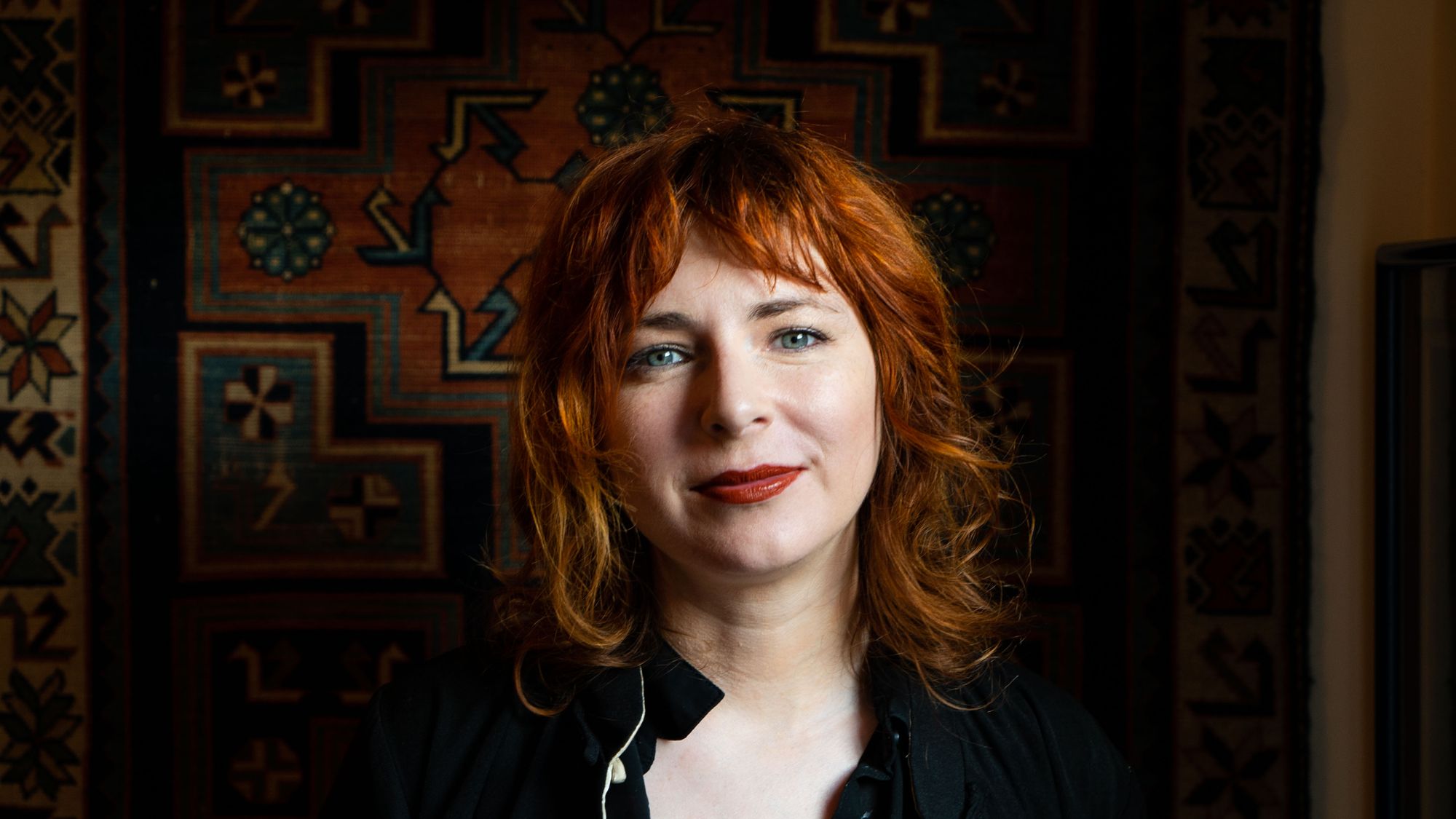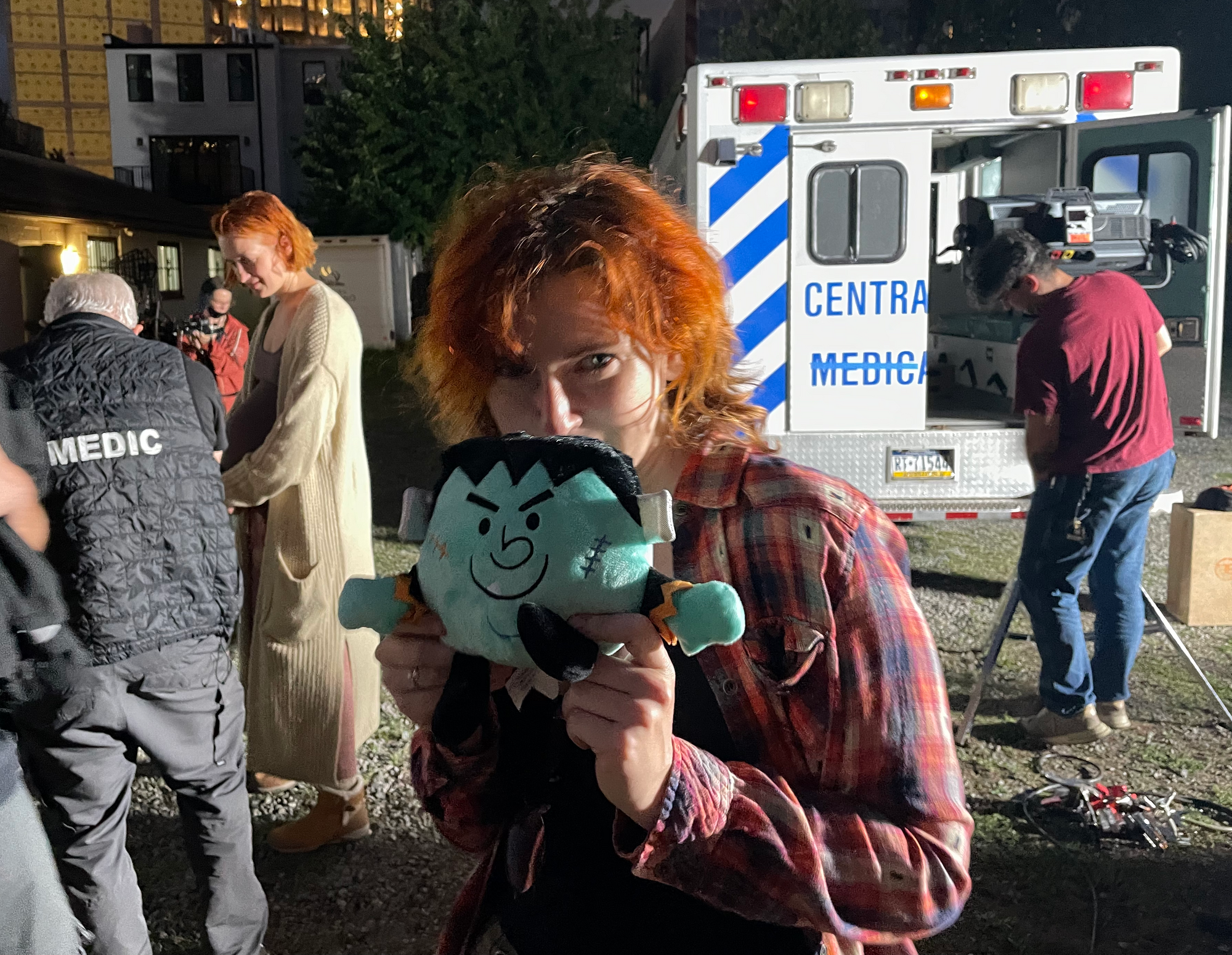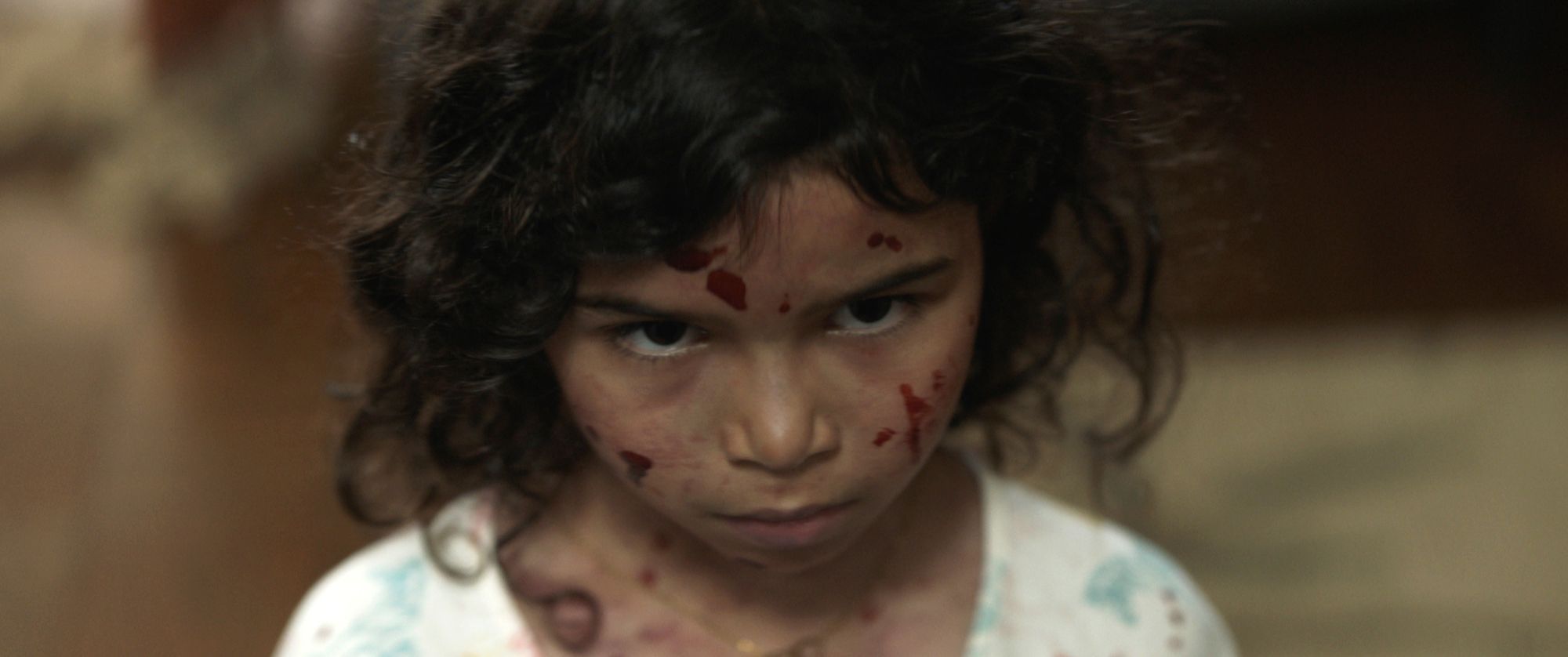
Birth/Rebirth: A Profile of Writer-Director Mx. Laura Moss
For those looking to add to their Halloween viewing repertoire, look not further than director Laura Moss feature film debut Birth/Rebirth, now available to buy or rent on VOD through AppleTV, Amazon Prime, and Youtube. It’s a dark feminist modern Frankenstein tale—where a morque technician secretly reanimates a young girl and, with the help of the girl’s mother, continues to collect tissues and fluids of pregnant women to keep her alive. Starring Marin Ireland and Judy Reyes, Birth/Rebirth premiered at the Sundance 2023 Midnight section and was picked up by IFC Films for US distribution. Rotten Tomatoes has given Moss’ debut feature a 95% certified fresh rating.
I was able to cross paths with Laura during the pandemic on my first trip to New York City where they reside, and Pre-Production for Birth/Rebirth was well under way. Moss is a tour-de-force with a vast knowledge of film under their belt and a strong sense of indie spirit that makes you go, "yeah, why aren’t we making a movie RIGHT NOW?" Naturally, they have been named one of Filmmaker Magazine’s 25 New Faces of Independent Film, an IFP Emerging Storyteller, a Eugene O'Neill Fellow, and a Sundance Screenwriters and Directors Labs Fellow. Moss’ short form work has screened at Tribeca, Rotterdam, and SXSW. Their film Fry Day is featured on the Criterion Channel.
After seeing Birth/Rebirth at a limited theatrical screening in Los Angeles this summer, I was so excited for the film to go to streaming this August so I could finally get others to watch the dark, twisted tale that had glued me to my theater seat. The images are often stark, visceral, and make you squirm because they feel so grounded. And the spiralling of questionable ethics circles us around till the end to leave us with our own dark feelings of what we might do if we were in the shoes of Rose (Ireland) and Celie (Reyes). And graciously, Moss gave me what time they could to answer my many questions about the film and the craft of filmmaking.
KAY: What’s a memorable moment you had on set? First-day jitters? Finally nailing a scene? Inclement weather?
LAURA: Right before pre-production is the loneliest time for me as a director. A truly thrilling moment was early in prep, walking into the office and witnessing my production designers, DP, and the whole production team working quietly in their offices, all on a thing Brendan (my co-writer) and I had invented. It was my 40th birthday, and I was very quiet about it—I don’t like birthdays—but I remember feeling like this was the perfect gift, this feeling of being totally supported. That many, many people smarter than I am were working on this film and everything was going to be okay.
KAY: As a creative who weathered the ups and downs of a pandemic (and now two strikes), it’s easy to become unmotivated. What helped you keep to task and finish your projects?
LAURA: This is a very nerdy answer, but I am part of a four-person accountability group, and it has changed my practice as a filmmaker. Every week, we meet on Zoom for 30 minutes max and say what we plan to do in the week ahead and reflect on the week that has passed. It's a smaller time commitment than a writers group (no reading each other’s pages), but we each get to know the goals and aspirations of the other members and support each other and strategize. That little guilt factor of having to be accountable to other people usually motivates me enough to complete the tasks that inch my projects forward week by week, even when I'm not feeling so inspired.
KAY: How did you feel learning that your film made it into Sundance for its premiere?
LAURA: I remember getting the call in the morning, on a day that I was headed into post, and later feeling bad because I think I gave a pretty flat reaction over the phone. The truth is I was in shock—excited of course, but terrified. The idea of sharing my first feature—a film so personal to me and that I had been working on for so long—on such a monumental stage scared the crap out of me. The butterflies didn’t go away until the festival was over and I was back on a plane in Salt Lake City.

KAY: While the medical elements lean into body horror of Birth/Rebirth (um, so many needles) there is a counterbalance of Celie’s growing willingness to go down a psychologically dark path. How did you balance these two essential horror elements?
LAURA: I wouldn’t call Celie willing. I think she is driven by circumstances created by Rose. A question that I was thinking about throughout the making of the film was “who is the real monster here?” Is it Lila, the obvious allegory for Frankenstein’s ‘creature’? Is it Celie, who ends up compromising her humanity in order to save her daughter? Or is it Rose, who irrevocably altered the circumstances of this girl and her mother forever without their consent.
In terms of the needles of it all, I knew that the medical aspects of this film needed to feel grounded for people to go on the ride of the film. My cinematographer and I chose to film the medical procedures with an unsparing, unsentimental lens. This felt true to Rose’s perspective on her work on the human body.
KAY: As a director, what was it like working with such talented actresses? Marin Ireland and Judy Reyes portray such different personalities united on a common goal. Their scenes together fuel the story beautifully.
LAURA: When you have tremendous actors who are doing beautiful work, the most important thing to remember as a director is that less is more; you can be a support system for them, but you don’t want to constantly insert yourself into their work. Their approaches were different, but Marin and Judy had stamina and rigorous preparation in common. They also knew enough about their own processes to be able to ask for what they needed. Marin is very visual, and I shared with her a lot of cinematic and image references for Rose. Judy and I talked through the emotional beats of scenes quite often; she is an actor who needs to feel the emotional logic of her character in her bones and once she has that, she is good to go.

KAY: I found your examination of women’s expected roles in raising children (and often the absence or less powerful paternal role) very striking. As a non-binary filmmaker who has chosen not to have children [for the time being], I would love to know more about your personal lens into this topic.
LAURA: I could write 1000 pages on this question and still not get to the bottom of it. Where to start? I would not say I have chosen not to have children. It’s true I don’t yet have children, and it’s very possible I’ll never give birth. I wanted to explore the differing ways to be a parent, and in this particular story, a mother.
Because of Celie’s profession and Rose’s needs, in terms of material, the processes of birthing and abortion come into this film often, but I was most interested in how the emotional bond between a parent and a child is formed, and if it’s something you need a biological connection for. Rose has, of course, made a biological contribution to Lila in the film, but is not her birth mother. I wanted to explore how caring for a child day-to-day, and the awesome responsibility of keeping her alive, might transform Rose.
KAY: Birth/Rebirth opens and circles back to the phrase: “But what about me?” in regard to a pregnant person’s health and well-being while carrying and delivering a child. This is a core thematic argument in the film. How did it come about when working on the story?
LAURA: Since I haven’t given birth, I really made sure to listen to women who have gone through that experience and incorporate their feelings into the film. Something that came up over and over with the people we talked to was a feeling that their bodies were no longer entirely their own. People described being touched without their consent, being talked over by doctors, and a focus on the welfare of their fetus at the expense of their own health, and sometimes life! These are issues that terrify me when I think about gestating a child and so in the context of a horror film they felt important to put on screen.
KAY: In a dark way, Rose represents a dark (but kind of awesome) version of bodily autonomy. Did you always see her that way? Or did the character evolve into that?
LAURA: Rose, at first, treats her body like a vending machine. Although she takes good care of it, she isn’t very connected to it or holistic in her understanding of self. For her, auto-abortion is an unsentimental means to an end; she would never consider it a political act. It was important for me to refrain from using Rose’s actions to make a societal statement, and rather think about her beliefs and her actions as manifestations of her character.
KAY: Based on your other interviews, I learned you trained and were an EMT post 9/11—how has training in a scientific field affected how you tell stories? How about your personal brand of horror stories?
LAURA: My experience as an EMT gave me a great perspective as a filmmaker: it’s important work, but it’s not life or death. Having to perform in a real emergency gives you triage skills and helps you practice staying calm under pressure, both of which are useful as a filmmaker, especially on set. Working in an ambulance also heightened my bullshit detector when it comes to how I consume stories with a medical aspect. It was important to me to construct this narrative in a way that didn’t pull any doctors or nurses who may be watching out of the story. I think it has made me more meticulous in my approach to any procedural element of a screenplay.
KAY: Celie’s line in the film, “Dignity and motherhood don’t always line up,” rings so clearly, especially by the end with what Celie has done. This feels in contrast to the typical warm, doting, glowing image of motherhood often shown. What inspired you to show this darker side?
LAURA: I certainly didn’t want to depict motherhood as monstrous. In speaking with mothers, and wrestling with my own fears around parenthood, I did want to show a more nuanced side of things than what I normally see on screen. I’ve been really gratified when mothers come up tell me they felt a catharsis in seeing their experience reflected in this film, even if that experience was a traumatic emergency c-section.
KAY: I would love it if you could discuss your writing partnership on horror thrillers with your partner Brendan J. O’Brien. What is the work process between the spark and development of an idea? Do you work together at the same time or do each of you give the drafts a pass, etc.?
LAURA: Usually it starts with a line, a joke, or a casual conversation between us that reveals an idea neither of us can let go. It wouldn’t surprise people to know that this one was mine, but on our next film that spark came from Brendan. We then talk through story elements together, eventually committing to a bullet point outline. Brendan will write the vomit draft, which is way too long, and I’ll take a scalpel to it until it’s far too short. After that, we bat each scene back and by the end we’re not actually sure who wrote what.
KAY: For many filmmakers still in the early steps of their careers, what advice would you give them to make the most of their time artistically?
LAURA: Make one thing every year that doesn’t suck (by your standards). It can be a simple directing exercise, and it can be shot on your phone, but write it, shoot it, edit it, and show it to at least one other person. It takes so long to get funding, or get into the WGA or the DGA, and in the pursuit of filmmaking as a career, it’s easy to feel out of control. Consistently writing and producing your own work is the only thing you can control.
KAY: If you could remake and direct any film, what would it be?
LAURA: Ooh maybe Falling Down? I think it’s important for white people to make films exploring the insidiousness of the concept of whiteness. It’s a tricky film that I think was ahead of its time, and it now could do with a major update.
KAY: What are you working on next?
LAURA: Brendan and I have already written our next project, a satirical upending of the slasher genre. It’s a dark comedy called Gordon, about a misdiagnosed sociopath trying to be good in a wicked world. We’re hoping to shoot it in 2024.
*Feature photo of by Laura Moss by Eythan Maidhof